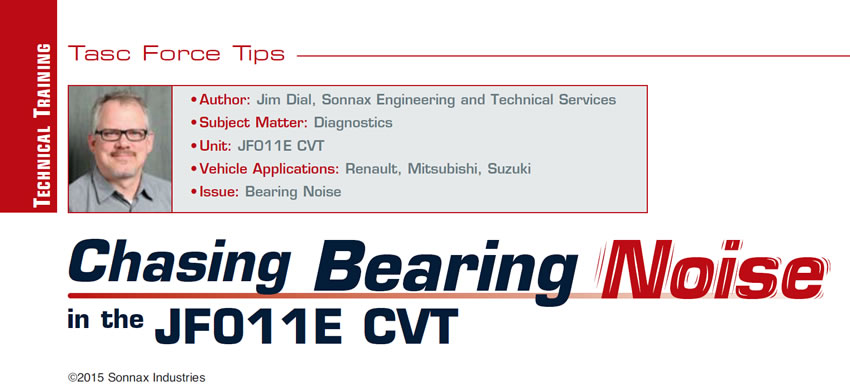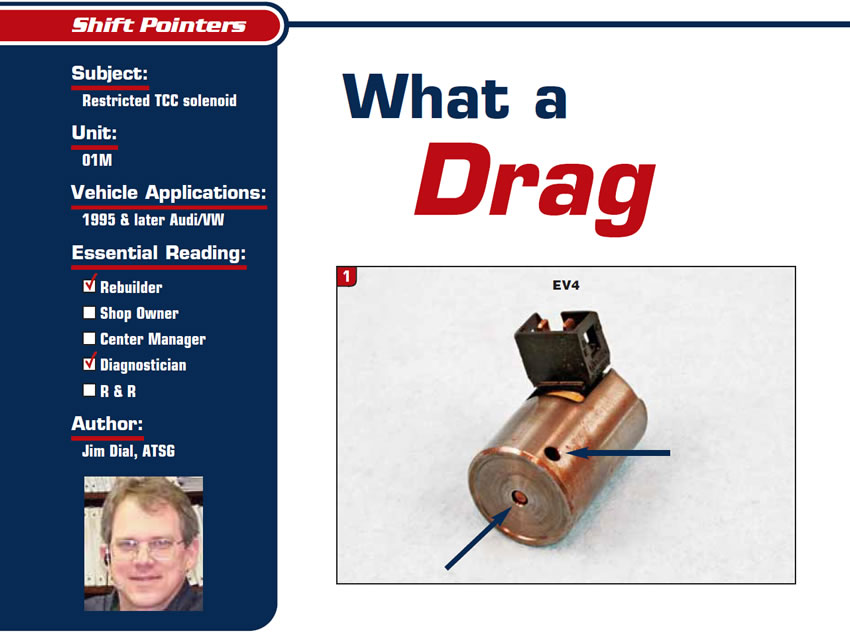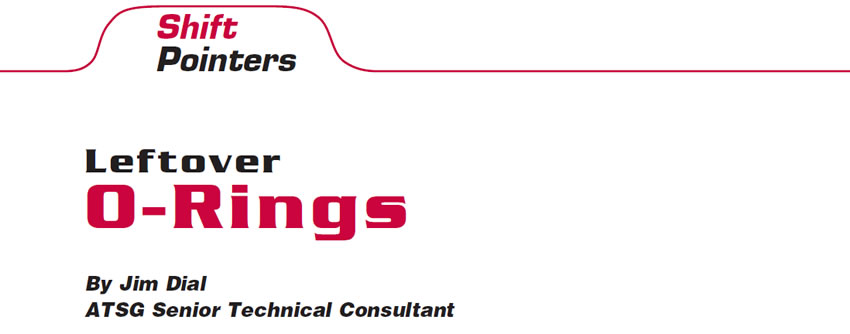Chasing Bearing Noise in the JF011E CVT
Bearing noises can be difficult to track down even in familiar transmissions which we work on daily. The advantage of the familiar is that we know how to take these units apart and have a general idea of power flow and overall operation–plus, we typically have plenty of extra pieces on the shelf should we need them. Bearing noises in the CVT transmission are much harder to deal with, because we’re not as familiar with it as the units rolling in the door on a daily basis and spare CVT pieces are pretty much non-existent. This has created some minor paranoia when it comes to taking on a CVT repair. Hopefully this article will dispel a bit of the apprehension regarding these units and prove that–with the right tools and a little know-how–CVTs can be repaired and become decent money makers for a shop.

What a Drag
The ATSG tech line frequently receives calls related to engine stall or even a partial-stalling condition that could be easily mistaken for an engine-performance problem in 1995 and later Audi/VW vehicles with the 01M transmission.

Leftover O-Rings
Have you ever wondered where those extra O-rings go that are left over in the kit bag after you’ve completed an overhaul on a transmission? Most rebuilders, including myself, will twist-tie them to a bellhousing bolt hole and say, “Must be some spare pieces for the R&R guy!”

The Trooper Blues
The description for code 37 says this “serial line” is the wire that is connected from the transmission control module to the engine control module and the diagnostic connector. This wire is used for torque management. How it works: The TCM delivers a spark-advance signal to the ECM during each shift, through this serial line, to reduce engagement shock. Any interruptions, shorts or opens on this line will set a code 37.

P1870 Revisited
Just when you thought you had all the P1870 torque-converter-clutch slip codes under your belt, another vehicle comes along – and here we go again!

Honda & Acura – the New Generation
This has now become a very frequent question on the tech line: “Hey, what are all these solenoids, and what in the world do they do?” The questions started in the 1997 model year, when the Honda Prelude came out with the M6HA transaxle. This was one of the first vehicles to receive this new-generation 4-speed. This article, I hope, will clear up some of the questions on shift strategy, clutch-pack applications and solenoid application. After all, how can you fix something if you don’t know how it works?

